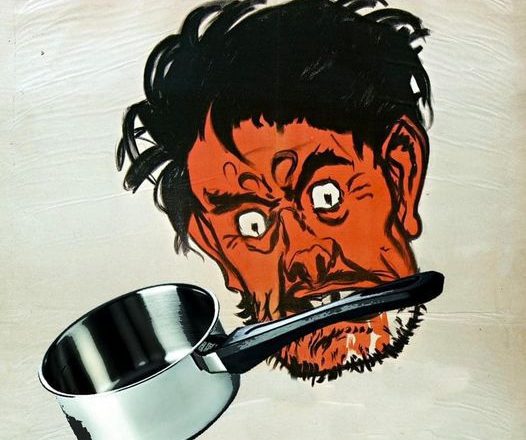900,000 people demonstrated in France on June 6th in the 14th day of mass action against the pension reforms of the Macron government. However, it was the first day of action since May 1st with union leaders failing to call any strikes or demonstrations in the intervening period.
This may account for a drop in numbers since May 1st which brought out 2 million people. Some union leaders are already talking about surrender. For example, Laurent Berger, head of the Confédération Française Démocratique du Travail (CFDT) union central admitted that this was the last such mass action.
On May 1st there was a difference when many young people, students, and high school students, joined the demonstrations. There were a number of ‘wild‘ demonstrations again including these young people, which broke away from the official demonstrations to converge on various buildings seen as symbols of power and oppression.
The union leaders did not in the least appreciate this influx of young people or the wild demonstrations. This accounts for their postponement of the next day of action for five weeks. This led to a demobilisation in June and meanwhile students had become pre-occupied with revision and exams.
One other phenomenon should be noted-the casserolades or saucepan demonstrations. These have replaced the street demonstrations and involve people turning out with saucepans, frying pans and other cooking utensils to make a din wherever Macron or members of his cabinet turn up to make speeches or attend a public event. It has its roots in the 1830s when radicals turned out in attempts to oust King Louis Phillippe. They failed to do so and as Macron himself noted, “It’s not saucepans that will make France move forward.” All very good, but not enough to replace mass united action.
And united action was what was needed. The various union centrals refused to call for united action, bringing out certain sectors like railway workers or energy workers in isolated strikes. As the comrades of the Organisation Communiste Libertaire (OCL) noted: “Finally, the movement relied heavily on employees with more or less secure employment and retirees. The most precarious employees and job seekers, always very difficult to convince of the possibility of fighting (which can be understood) were not very present in the demonstrations.”
Despite as many as three and a half million people coming out on the streets, despite the blockades and casserolades, the Macron regime has proved inflexible. Macron has demonstrated that any demonstration whether connected with the pension reforms or with environmental concerns will be dealt with by the police thugs directed by the Minister of the Interior, Gérald Darmanin, a sympathiser of the far-right group Action Française. Instead of escalating the struggle the union leaders have once again resorted to mediation, which will not shift the Macron regime’s policies.
Indeed, the French National Assembly has voted to put through the Military Programming Law (LPM) which boosts France’s military increases the military budget by 40 percent, from €297 billion to €413 billion between 2024 and 2030. This will be spent on nuclear weapons, the stockpiling of ammunition and the development of cyber warfare. This is in line with Macron meeting with German and Polish leaders in Paris on June 12th where they called for Russia to be completely demilitarised and for Ukraine to join NATO.
This huge military expenditure is at the expense of workers’ pensions. While the Macron regime argues that it needs to save money by raising the pension age, it is fully prepared for a massive outlay on military spending.
So, the struggle against the pension reforms must be linked to the struggle against militarism, to a No War But The Class War position. Austerity and militarism are inextricably entwined.
So, what does the future hold? It is obvious that French workers must develop alternative forms of organisation and must break with the leaderships of the various union centrals, looking towards the establishment of grassroots strike committees, to effective united action and a general strike.
Meanwhile one of the mass left parties, La France Insoumise, led by Jean-Luc Mélenchon, believes that it can stop the pension reforms through an alliance with Libertés, Indépendants, Outre-mer et Territoires (LIOT), a parliamentary grouping of ‘centre left’ and ‘centre right’ MPs. This is a distraction from the need for mass action in the workplaces and on the streets.
What can we look to? Positive developments like the strike at the Heineken owned brewery in eastern France, where unity across four different unions led to united action. But also a proliferation of demonstrations around water management, road infrastructure and the building of commercial areas. Despite the rhetoric of “eco-terrorist” used against these actions by the State, despite the militarised turnout of the police as at Sainte Soline, where 25,000 demonstrators opposed to the building of huge water reservoirs faced 3,000 police and 10 helicopters, there is still a large amount of support for these mobilisations.
These struggles in the countryside need to be linked with those in urban areas. In addition, as aggression against migrants increases, it is necessary to develop solidarity with them and expose the collusion between the right in parliament and the far-right street groups.
Despite overwhelming opposition to the pension reforms in France, the Macron regime has shown that it is intransigent in its opposition to the social and environmental movements and against migrants. For this it relies on an increasingly militarised police force, many of whom support the far-right parties of Rassemblement National (ex-Front National) and Reconquête. Thus, the differences between Macron, the Gaullists and the far-right are seen to be increasingly minimal.

